Vinegar Syndrome January releases
Here we go again…
Like the sucker I am, I ended up re-subscribing to Vinegar Syndrome for 2023 and recently received my January bundle. Would I have ordered these four releases individually? Probably not. Did I enjoy watching them? For the most part. I’ll avoid serious consideration whether they were really worth buying.
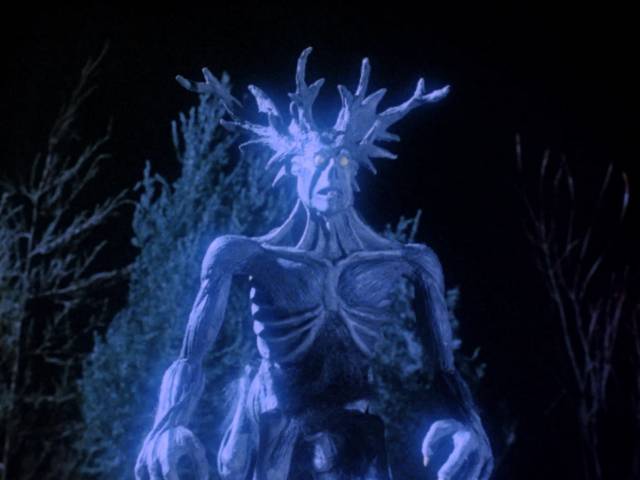
Frostbiter: Wrath of the Wendigo (Tom Chaney, 1995)
A friend lent me a DVD of Tom Chaney’s Frostbiter: Wrath of the Wendigo (1995) some time back and I honestly had no memory or it, though the opening scenes seemed vaguely familiar. As it went on, that feeling dissipated and I may not have finished it back then – a cheap and obvious knock-off of Evil Dead, it seemed painfully amateurish in both writing and acting – but I got through it this time and discovered that while the amateurishness is undeniable there’s something I could actually appreciate: the home-made special effects.
When a pair of drunken hunters stumble across a cabin on a snowbound island, one of them starts an argument with the ancient inhabitant and accidentally shoots him. Turns out the old guy had been guarding a portal to another dimension for the past century and now that he’s gone, the deadly Wendigo comes through and begins attacking not only the initial pair, but also another group of hunters sheltering against the storm in a cabin. Along with the Wendigo, a giant stop-motion creature resembling a deer, there are various minions, including an animated pot of chili and a very Evil Dead-like possessed woman.
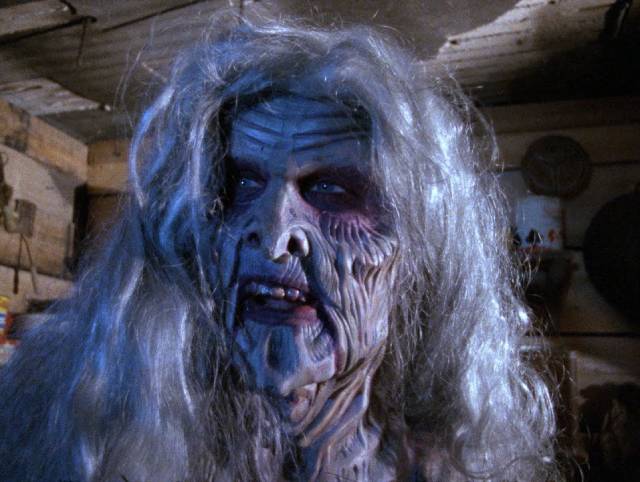
The extensive use of miniatures (the cabin, a plane flying through the storm) and the mix of on-set practical creature effects and stop-motion put Frostbiter on the same shelf as Christopher Thies’ Winterbeast (1992), which given my perverse tastes is not a bad thing. I’m not sure whether my more positive response on this viewing is entirely due to Vinegar Syndrome’s impressive 2K scan from the original 16mm camera negative or simply my mood, but I did enjoy it despite the sometimes painful performances.
In addition to the new transfer, the disk is packed with multiple new and archival featurettes, plus a director commentary.
*
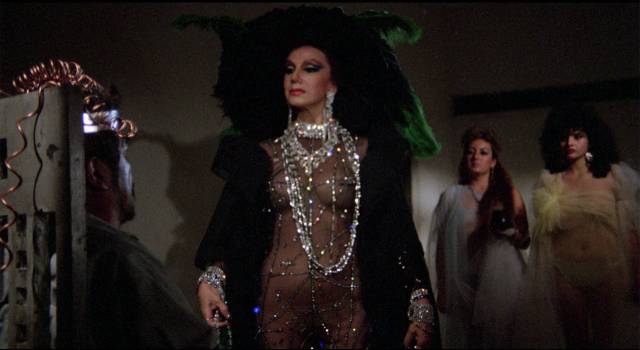
El violador infernal (Damian Acosta Esparza & Jose Medina, 1988)
The title El violador infernal (1988) seems a bit less ominous than its direct English translation as Infernal Rapist, but either way this Mexican exploitation movie is sleazy. Directed by Damian Acosta Esparza and Jose Medina, it’s mostly a string of offensive scenes of rape and murder justified by a supernatural premise. El Gato (Noe Murayama) is scheduled to be executed for his brutal crimes, but doesn’t seem too concerned as he’s strapped into the electric chair in a barren room. After an unconvincing electrocution, his body is left strapped in the chair as the prison officials and priest exit, at which point three scantily-clad women materialize. Turns out one of them is Satan (sixty-year-old Ana Luisa Peluffo, dressed like a flamboyant drag queen) and she offers El Gato a deal: she’ll restore his life and give him riches if he’ll continue to rape and murder in her name. All he has to do is remember to carve “666” into the flesh of his victims.
And so the supposedly dead man disappears from the execution chamber and roams the city in a white suit driving a Lincoln Continental, picking victims up in bars, seducing them and turning nasty during what usually begins as consensual sex. Unexpectedly, his first victim is a gay man. The police don’t take the crime too seriously, seeming to see it as just a normal part of being gay. But when El Gato turns his attention to women, they’re puzzled that his M.O. points towards the recently executed convict. Given his supernatural protection, he gets away with multiple murders until the one time he forgets the “666” and Satan shows up to rescind their deal.
Infernal Rapist is unapologetically sleazy, making no attempt to add any moralizing to soften or justify its displays of sexual violence. Crude and cheap (the minimal effects showing Satan’s power consist of a couple of “laser beams” drawn over a freeze frame of Peluffo’s eyes), it aims pretty low and hits its target, offending for the sake of giving offence. In addition to several actor interviews, the disk includes an audio essay by Alexandra Heller-Nicholas who argues that even something like this deserves to be accepted on its own terms.
*
Made in Hong Kong Volume One (Various, 1998-99)
Made in Hong Kong Volume One is a two-disk collection of three movies from the late ’90s, one Category III (“adults only”), the other two Category II (“not suitable for children”), loosely connected by the presence of the iconic Anthony Wong. While the restricted categories encompass a wide range from serious dramas to extreme exploitation, it’s the latter that fans generally expect and that’s what the set delivers. Two of the features included were better than I expected, with the third being an irritating dud.
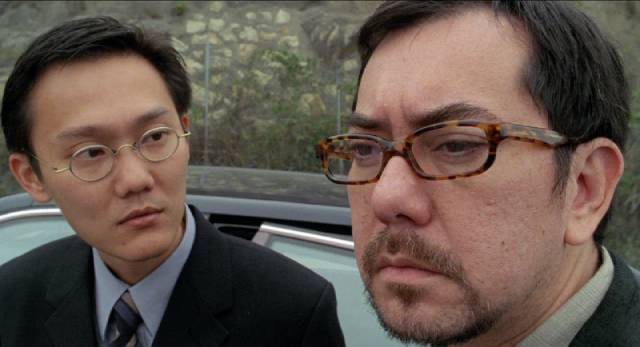
Erotic Nightmare (Cheng Wai-Man, 1999)
Cheng Wai-Man’s Erotic Nightmare (1999) was perhaps the biggest surprise, its premise seeming to point towards little more than an excuse for soft-core exploitation. It does deliver that, but within an effective horror story which goes in unexpected directions. Wong plays Lok, a businessman working on a big deal while coping with family issues – his wife has health problems which have prevented her becoming pregnant, while his mother is stressed by a neighbour who makes violent threats about her beloved dog, who supposedly keeps crapping on his lawn. Every morning Lok wakes from an upsetting wet dream, embarrassing both himself and his wife.
While scouting a location with his business partner, Lok encounters a man who offers him control of his dreams before abruptly disappearing. Going to the address on the man’s card, he makes a deal – for a fee, the sorcerer Fong (Ting Yip Ng) will provide beautiful women for nighttime sexual encounters. Lok’s dreams have him as a teacher surrounded by young, sexy, available schoolgirls … but his encounters are repeatedly interrupted. When the angry principal chases him with shears, intent on castrating him, she ends up dead and he wakes to find a trail of blood leading from the bedroom; following it, he discovers his mother dead and dismembered.
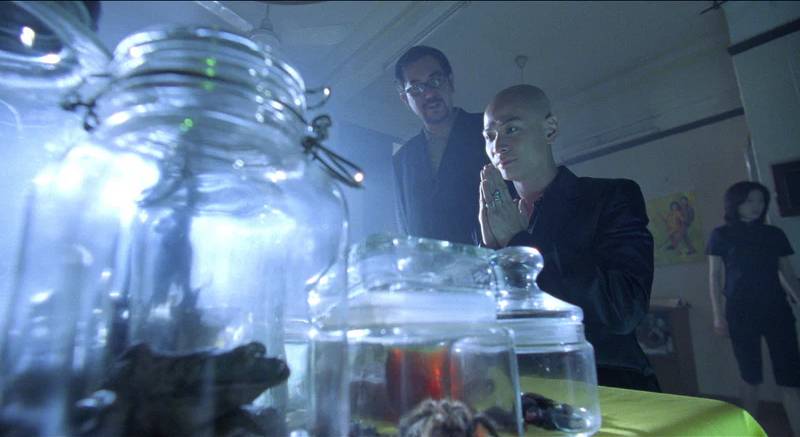
With his dreams spilling over into the real world, he wants to cancel his agreement with the sorcerer, but the man enters his dreams and gets him to sign over his bank account and business. But even that isn’t enough, since the sorcerer is utterly malevolent and takes pleasure in completely destroying his “clients”. Two-thirds of the way in, the story takes an unexpected turn and the final act involves Lok’s brother arriving from Malaysia, where he has studied magic, and engaging with the sorcerer in a battle which slips in and out of reality and the dream realm.
The movie works very effectively as an Elm Street-type horror fantasy, with Wong giving a good performance as a man too easily tempted by the promise of safe illicit sex and Ng making for an excellent villain.
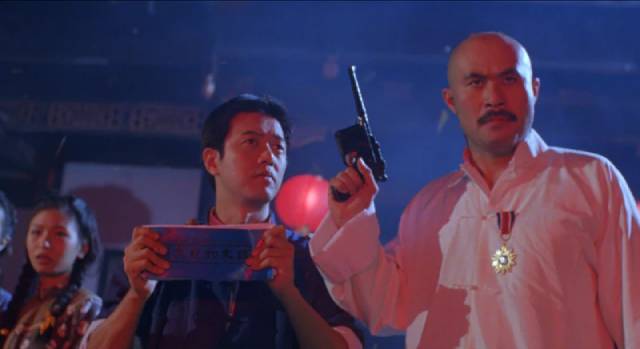
The Demon’s Baby (Kant Leung, 1998)
Kant Leung’s The Demon’s Baby (1998) is very different, belonging to the horror-comedy genre popular in the ’80s which combines elements of period martial arts with ghosts and monsters – best exemplified by movies like Encounters of the Spooky Kind, The Dead and the Deadly and Mr. Vampire. The period here isn’t clear – although sets and costumes are similar to movies set in the 19th Century (or even earlier), there are some more modern weapons – but the flavour is distinct. The men of warlord General Hsu (Elvis Tsui) discover a treasure-filled cave which, unknown to them, also contains five jars in which demons are trapped under the watch of a gold Buddha.
Everything is taken back to the general’s home, where he’s just taken a young fourth wife, triggering the jealousy of the other three. Quite a bit of time is spent on the routines of the house – the general chooses a different wife for sex every sight; his second-in-command Lee (Lee Siu-Kei) is having an affair with one wife and when he’s discovered by a servant, he kills the woman and dumps her body in the river; and cook Day-Six (Emotion Cheung) and servant Little Fish (Annie Wu) plan their future together. Then Lee steals the gold Buddha to sell for cash, replacing it with a fake which has no power over the demons.
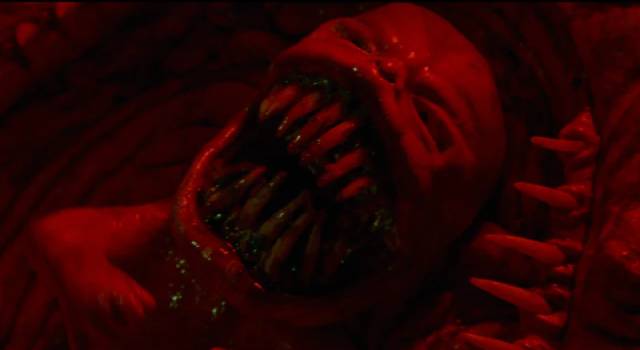
Unleashed, the demons possess the general and send him to impregnate all four wives in one night. They also eventually possess Day-Six, who impregnates Little Fish. Things develop rapidly and the second half of the movie becomes a frenzied maelstrom of supernatural action as the pregnant women consume everything that moves, their bellies opening up like something from John Carpenter’s The Thing (1982), tentacles grabbing animals and people and dragging them in to be devoured by the ravenous demon fetuses.
The general shoots everyone in sight, while Day-Six gets the help of exorcist Chin Hai (Anthony Wong) to combat the monsters. The mixture of over-the-top monster effects, gore, slapstick violence and pathos (Day-Six has to destroy the woman he loves, whom he unwittingly impregnated with a monster) distinctly belongs to a Hong Kong cinematic tradition (even a hopping vampire puts in a brief appearance), the dizzying mix of tones making for exhilarating entertainment.
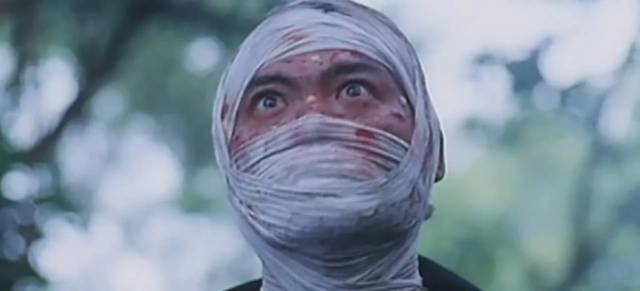
The Deadly Camp (Bowie Lau, 1999)
After this high point, Bowie Lau’s The Deadly Camp (1999) is a big disappointment. Modelled on ’80s slasher movies, it continually misses the mark. There are long stretches of inane banter and scenes that lead nowhere, while crucial moments are skipped over – no sense of pace or dramatic structure. A group of bickering friends (three couples) take a boat to a supposedly uninhabited island. They encounter another group of campers on the beach, led by Anthony Wong, who seem vaguely threatening … but the real threat comes from a family of psychos living in the interior, an idiot son and a silent parent wrapped in bandages (later referred to as “the leper”).
The friends romp interminably in the surf, have pissing contests in the woods, and discuss their relationship issues … until the local psychos start kidnapping the women (the father wants to introduce the idiot son to sex) and killing anyone who gets close to their home. There are also deadly booby traps in the woods. It’s all very tedious, leading to a final throwaway revelation before the only surviving couple make it off the island.
All three movies get decent 2K transfers from the original negatives, and there are commentaries on Erotic Nightmare and The Deadly Camp, a visual essay on The Demon’s Baby, and a featurette on Anthony Wong.
*
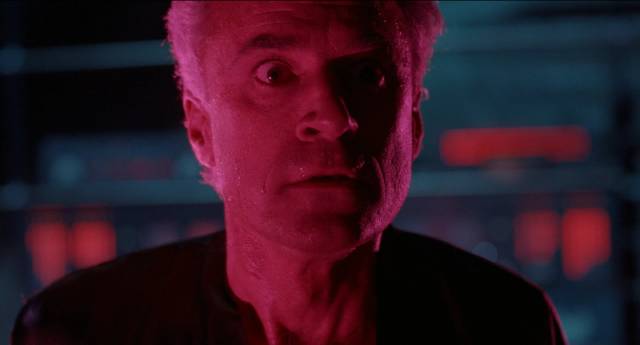
From Beyond (Stuart Gordon, 1986)
Finally there’s a 3-disk, dual-format 4K UHD/Blu-ray edition of From Beyond (1986), Stuart Gordon’s follow-up to Re-Animator (1985). The big problem with adapting H.P. Lovecraft is that his work is almost exclusively about mood rather than narrative, which means filmmakers generally have to invent characters and plot elements to flesh out a feature-length movie. Paradoxically, that frequently undermines Lovecraft’s moods. In Re-Animator (1985), Gordon’s first feature, also based on a Lovecraft story, the emphasis was on sex and comedy, which is about as far from the source as you could get. In From Beyond, however, Gordon ditches the comedy and lands closer to Lovecraft’s cosmic horror.
Which is not to say that he and co-writers Brian Yuzna and Dennis Paoli didn’t have to invent a lot of narrative detail. The source story is only a few pages long, a brief sketch, but even with a lot of embellishment the movie remains faithful to the concept – that being the invention of a machine which through the production of certain vibrations makes visible the dimensions which share space with our world. This realm is inhabited by creatures which are constantly present, flowing around and through us harmlessly until they and we become visible to each other, at which point they become deadly.
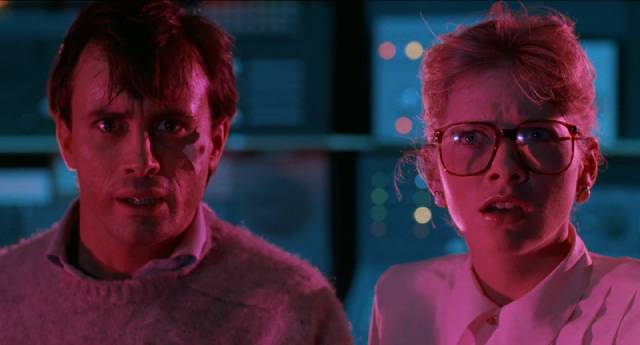
The story’s mad scientist Crawford Tillinghast is split into two characters – the mad scientist Dr. Edward Pretorius (Ted Sorel) and his assistant Tillinghast (Jeffrey Combs). When Pretorius fuses with creatures from the other side, Tillinghast smashes the machine and ends up in an asylum where Dr. Bloch (Carolyn Purdy-Gordon) diagnoses him as a paranoid schizophrenic with homicidal tendencies. Baffled by the case, the police bring in upstart psychologist Dr. Katherine McMichaels (Barbara Crampton), who believes there’s more to the case and wants to have Tillinghast recreate Pretorius’ experiment. Accompanied by cop Bubba Brownlee (Ken Foree), doctor and patient return to Pretorius’ house and repair the machine.
Naturally things get out of hand and with the portal re-opened the monstrous Pretorius returns, mutated and determined to assert himself in our world. Most of the movie is confined to the attic lab, with McMichaels displaying an unhealthy interest in the experiment until she finally realizes how dangerous it is – by pushing forward, she’s responsible for Brownlee’s death and Tillinghast’s escalating madness. This is the biggest change from Lovecraft, a writer definitely not noted for strong female protagonists.
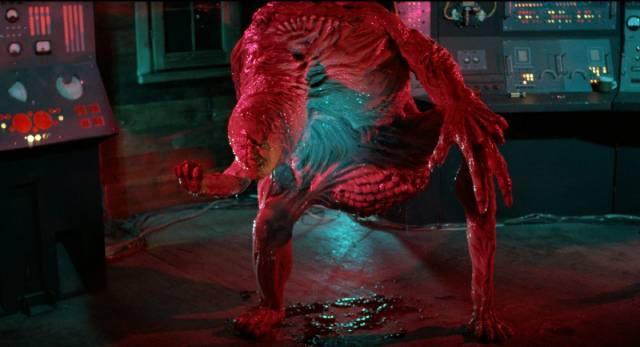
Produced by Charles Band, with Mac Ahlberg providing atmospheric and colourful cinematography, From Beyond was shot back-to-back with Gordon’s Dolls (1986) at the Dr Laurentiis studios in Rome. With a relatively small budget and tight schedule, it’s an impressive achievement, the extensive on-set (and occasional optical) effects still impressive. The makeup and creature effects were the work of a large crew which included Charles Band regular John Carl Buechler, Mark Shostrom and, near the start of his career, Robert Kurtzman.
One of the best movies produced by Band’s Empire Pictures, it’s also Gordon’s best film and one of the best Lovecraft adaptations. Vinegar Syndrome’s 4K restoration looks excellent and the set is loaded with extras, including a couple of archival commentaries, a new feature-length making-of documentary and a second Blu-ray disk of archival featurettes.
*
In addition to the subscriber bundle, I did actually order a pair of new sub-label releases: Ringo Lam’s Undeclared War (1990) from Vinegar Syndrome Archive, and Curt Siodmak’s Curucu, Beast of the Amazon (1956) from the new Vinegar Syndrome Labs.
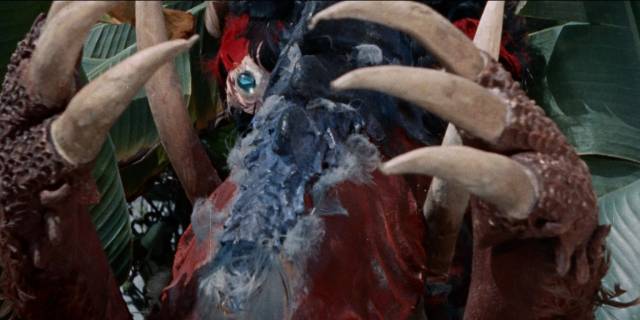
Curucu, Beast of the Amazon (Curt Siodmak, 1956)
If From Beyond seems like an obvious choice for deluxe treatment, Curucu, Beast of the Amazon is more puzzling. This movie is no one’s idea of a lost classic, or even an unsung gem ripe for rediscovery. While he directed a handful of undistinguished movies in the ’50s (who could forget Bride of the Gorilla [1951] with Raymond Burr? or The Magnetic Monster [1953]?), Siodmak had a better reputation as a writer – his best-known novel, Donovon’s Brain (1942), was adapted (and ripped-off) numerous times – and he had a long string of credits for horror and science fiction movies from the ’30s through the ’50s, including The Wolf Man (1940), in which he fabricated much of the werewolf lore we’ve since taken for granted, and Earth vs the Flying Saucers (1956), which along with War of the Worlds (1953) established the template for alien invasion movies. But as a director, he was definitely nowhere near the class of his brother Robert, who was a master of film noir.
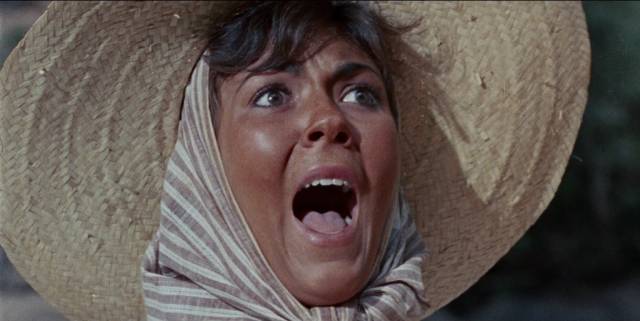
And yet, I was mildly engaged by Curucu, which was shot in colour on location in Brazil. It begins with a ridiculous giant bird-like creature killing a woman with its razor-sharp claws beside a river, a bit like an earthbound version of the endearing monster in The Giant Claw (1957). This is just the latest in a series of violent deaths attributed to a local curse, creating panic among workers on the plantations that line the river. With labour fleeing back into the jungle, Rock Dean (John Bromfield) wants to mount an expedition upriver to the falls which are believed to be the monster’s home. But before he starts, he encounters Dr. Andrea Romar (Beverly Garland), whom he immediately insults with crass sexist remarks about how the only reason a woman would have a career is because she can’t snare a man. Surprisingly, she agrees to a date, but it quickly becomes clear that she’s a lot smarter than him and merely wants to get him to agree to take her upriver to obtain some native medicines which will help with her research. He refuses because, of course, upriver “is no place for a woman”, only to find himself outsmarted when she hires the guide he was planning to use himself – so, resentfully, he’s forced to join her expedition, which seems like a promising reversal of expectations.
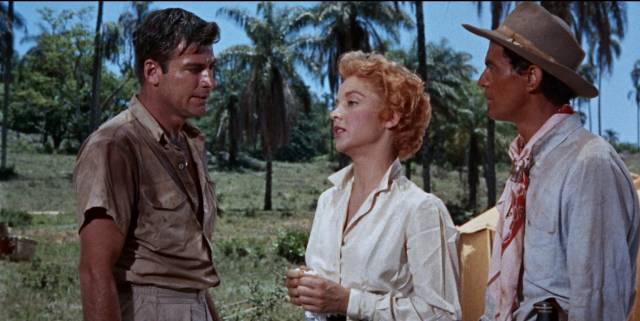
Needless to say, the journey upriver, which includes encounters with various deadly creatures as well as the beast itself, eventually strips away her self-assurance and reduces her to helpless hysterics which require Rock to save her and prove that indeed this “is no place for a woman”. But it’s not the retrograde attitudes towards gender that give Curucu its low reputation: it’s the disappointing revelation two-thirds of the way through that the monster is a fake, a costume worn by Tupanico (Tom Payne) who devised it as a way to scare his people back to their former life in the forest, before they were lured away and corrupted by Europeans with their money and vices. Actually, this let-down is offset by the most interesting aspect of the movie, which is its implicit critique of colonialism and the arrogant dismissal and destruction of indigenous ways of life. Naturally, the movie itself seems virtually unaware of what it’s saying, more concerned with its white hero eliminating the threat to plantation owners’ profits and, more importantly still, teaching the woman her proper place – Andrea really must devote herself to his needs rather than all that nonsense about medical research and saving people’s lives.
Scanned in 2K from a 35mm dupe negative, the disk image is wildly uneven, with some parts quite pristine while others are smothered in excessive grain which obliterates detail, something which shifts from shot to shot. Released as the first in the new Vinegar Syndrome Labs line, it’s intended as a test case to gauge the level of interest in this kind of fringe genre title. The only extras are a very brief featurette with Siodmak struggling mightily to express himself in English and a commentary from Barry Forshaw and Kim Newman, which I’m sure will be worth a listen when I have the time.
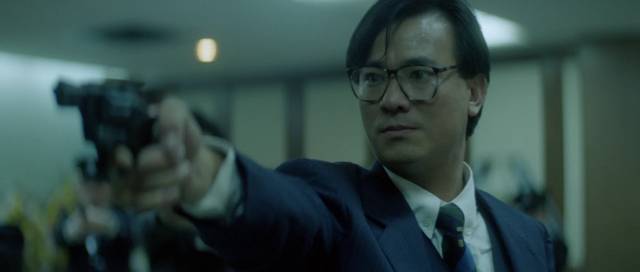
Undeclared War (Ringo Lam, 1990)
With the handover of Hong Kong to mainland China looming, Ringo Lam obviously already had his eye on the possibility of an international career when he made Undeclared War (1990) in the middle of his run of great Hong Kong action movies. With a multinational cast and an opening section shot in Warsaw, the movie tries to tap into the kind of thrillers which had long trailed in the wake of James Bond and its like. Even when it settles down to action in Hong Kong, it has a generic quality which lacks the intensity of Lam’s crime films. It doesn’t help that the odd-couple teaming of Special Branch Inspector Bong (Danny Lee) with CIA agent Gary Redner (Peter Liapis) lacks chemistry, largely due to Liapis’s severe charisma deficit. Redner is an arrogant, insulting avatar of American imperialism who abuses everyone around him and resorts to kidnapping, torture and murder to get what he wants – much like the villain, though in his case it’s justified because he’s the “good guy”.
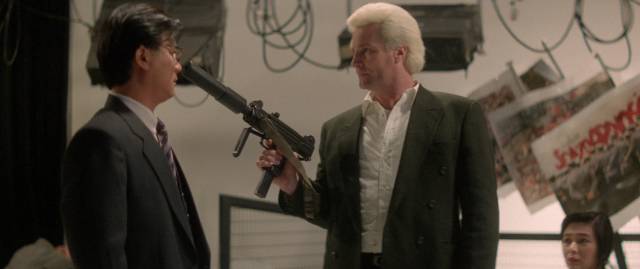
The plot involves an international terrorist group, apparently funded by the Russians to further world revolution, although it’s inevitably revealed late in the game that their leader Hannibal (Vernon Wells) is only interested in money and uses the revolutionary rhetoric to justify his greed. Having murdered the American ambassador to Poland and his family, Hannibal moves on to Hong Kong where a conference is about to begin with American-led business interests planning to launch an “Asian Silicon Valley”. By destroying this, Hong Kong’s economic independence will be severely compromised on the eve of the handover. Bong and Redner are forced into partnership when Hannibal’s second-in-command Rebecca (Olivia Hussey) is arrested. The rest is a cat-and-mouse contest punctuated by action scenes.
Although as a thriller Undeclared War is pretty colourless, Lam does handle the action with his usual skill, though the chases and gunfights lack an emotional kick, reduced to a technical display without much dramatic weight. After this trial run, Lam returned to more familiar Hong Kong crime stories for a few more years before heading to the States to make the first of his Jean-Claude Van Damme movies, Maximum Risk (1996), just before the handover. Vinegar Syndrome’s 2K transfer from the camera negative is fine, but it’s a drab-looking movie. The disk includes a commentary from Samm Deighan and interviews with Vernon Wells and score composer Noel Quinlan.
Comments